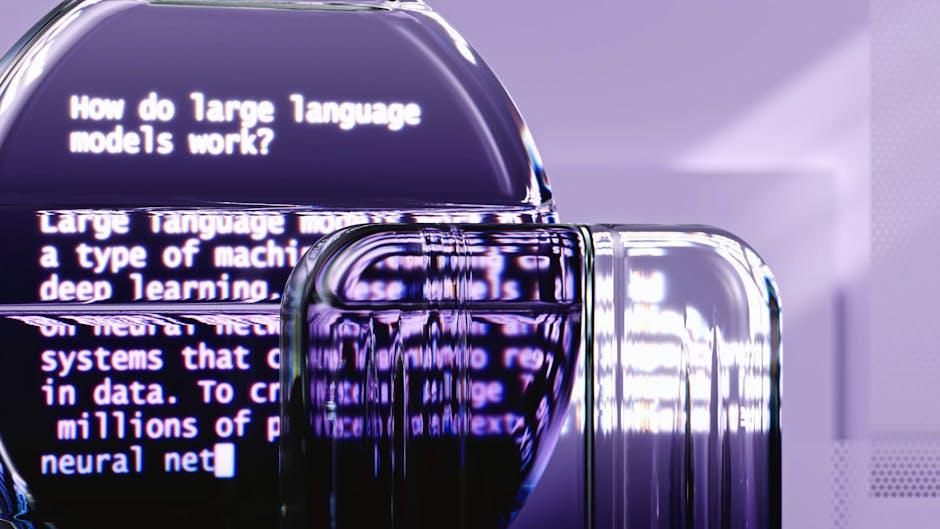In the bustling world of customer service, a quiet revolution is unfolding-one where the steady hum of call centers is being joined, and sometimes replaced, by the digital voices of AI chatbots. These intelligent algorithms promise faster responses, round-the-clock availability, and cost efficiency, challenging the traditional human-centric model of support. As businesses navigate this shift, the question arises: will AI chatbots become the new frontline of customer interaction, or are they simply a novel supplement to the irreplaceable human touch? This article explores the evolving landscape where technology meets communication, examining the potential and pitfalls of AI chatbots stepping into roles once dominated by human agents.
The Evolution of Customer Support Through AI Chatbots

Over the past decade, AI chatbots have transformed the landscape of customer support, shifting from simple scripted responses to complex conversational agents capable of understanding nuanced human emotions. Initially, chatbots could only handle straightforward queries, but with advancements in natural language processing and machine learning, they evolved into proactive problem solvers that anticipate customer needs and offer personalized solutions. This evolution has not only reduced wait times but also improved customer satisfaction by providing instant assistance around the clock, something traditional call centers struggled to deliver consistently.
Key improvements in AI chatbot technology include:
- 24/7 availability eliminating the restrictions of business hours.
- Multilingual support catering to global audiences seamlessly.
- Integration with CRM systems enabling tailored interactions based on customer history.
- Efficient handling of high volume requests without degradation in service quality.
| Feature | Traditional Call Centers | AI Chatbots |
|---|---|---|
| Response Time | Minutes to hours | Seconds |
| Availability | Business hours | 24/7 |
| Personalization | Manual | Automated & data-driven |
| Cost Efficiency | High operational costs | Low maintenance costs |
Balancing Efficiency and Empathy in Automated Interactions

Striking the right balance between speed and human connection is critical as chatbots increasingly manage customer interactions. While automation excels at swiftly handling routine inquiries and reducing wait times, it often lacks the emotional intelligence that human agents naturally provide. The challenge lies in designing AI systems that can identify moments when empathy is essential, such as resolving complaints or addressing sensitive issues, and seamlessly escalate these cases to human representatives. By integrating sentiment analysis and contextual understanding, chatbots can better read customer cues and offer responses that feel more personalized and compassionate.
The path toward harmonious automated interactions requires a multifaceted approach, emphasizing both technological innovation and customer-centric design. Consider the following priorities for achieving this balance:
- Adaptive Communication: Tailoring responses based on customer mood and query complexity.
- Hybrid Support Models: Combining AI efficiency with human empathy through smooth handoffs.
- Continuous Learning: Leveraging real-time feedback to improve chatbot sensitivity and problem-solving.
| Aspect | Automation Strength | Human Touch |
|---|---|---|
| Speed | Instantaneous responses | Slower but nuanced |
| Empathy | Basic sentiment detection | Deep emotional understanding |
| Consistency | Unwavering service quality | Variable, based on agent mood |
Addressing Challenges and Ethical Considerations in AI Deployment

As AI chatbots increasingly take over call center roles, businesses confront several challenges that require thoughtful solutions. One significant hurdle is ensuring accuracy and empathy-while chatbots can handle routine queries swiftly, they often lack the human nuance necessary for complex or sensitive issues. This gap can lead to frustration among customers, demanding a hybrid approach where AI manages initial interactions and smoothly hands off to human agents when needed. Additionally, data privacy emerges as a top concern, as chatbots process massive amounts of personal customer information. Companies must implement stringent security protocols and remain transparent about how data is collected, stored, and used to build trust and comply with international regulations.
Ethical considerations also extend to the workforce impact as AI replaces a large volume of traditional call center jobs. Organizations are called upon to balance automation benefits with social responsibility by supporting employees through retraining programs or redeployment strategies. The following table outlines some key ethical challenges alongside potential approaches for mitigation:
| Challenge | Potential Approach |
|---|---|
| Job Displacement | Offer upskilling & career transition support |
| Bias in Responses | Continuously audit AI decision-making algorithms |
| Data Privacy | Adopt end-to-end encryption & clear policies |
| Customer Experience | Combine AI efficiency with human empathy |
Strategies for Seamless Integration of Chatbots into Existing Call Centers

To effectively blend AI-driven chatbots within established call center environments, businesses must prioritize a balance between automation and human touch. Start with comprehensive training for both chatbots and human agents, ensuring seamless escalation protocols where bots handle routine queries and transfer complex issues smoothly to live representatives. Additionally, leveraging real-time analytics provides insight into bot performance and customer satisfaction, allowing continuous refinement of conversational flows and response accuracy.
Integration is further enhanced by adopting a modular technology stack that supports API-driven communication between chatbots and CRM or ticketing systems. This ensures a unified customer interaction history accessible to agents, improving personalization and reducing response times. The following table highlights key integration elements and their benefits:
| Integration Element | Benefit |
|---|---|
| API Connectivity | Unified data exchange |
| Multi-Channel Support | Consistent customer journey |
| Fallback Protocols | Minimal customer friction |
| Real-Time Analytics | Continuous improvement |
- Start small: Pilot chatbot features in specific customer service areas before full deployment.
- Gather feedback: Collect agent and customer insights to enhance bot-human collaboration.
- Maintain transparency: Clearly communicate when customers are interacting with AI.
Key Takeaways
As the sun sets on traditional call centers, AI chatbots rise with the dawn of a new era in customer service. Their digital voices promise efficiency, consistency, and round-the-clock support, transforming how businesses connect with their audiences. While the human touch may not vanish entirely, the evolving landscape invites us to embrace innovation and ponder the future of communication. In this unfolding story, AI chatbots are not just replacing call centers-they are redefining the very essence of conversation.











